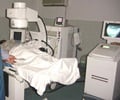People with chronic kidney disease have a higher risk of heart disease and heart disease-related death. But a new study has identified a pathological change that seems to link kidney disease to progressive heart disease.

‘Coronary microvascular dysfunction may mediate the effect of chronic kidney disease on abnormal cardiac function and heart disease events in those without overt coronary artery disease.’





"I am now collaborating with other UAB researchers to figure out how we can target therapeutics to help these patients," Bajaj said.The pathological change identified is coronary microvascular dysfunction, or CMD, say Bajaj and research colleagues at Harvard Medical School. CMD is decreased blood flow in the small blood vessels inside the heart muscle that provide oxygen and fuel to feed the pumping heart.
In healthy hearts, visualized postmortem, these blood vessels look like a tight filigree network that fills the heart muscle tissue. A diseased postmortem heart has lost much of this network. In living patients, however, those small blood vessels inside the heart muscle cannot be visualized; blood flow scans of living patients visualize only the larger, exterior coronary arteries. So Bajaj and colleagues needed an indirect way to gauge CMD.
That measure is coronary flow reserve, or CFR, which Bajaj and colleagues measured via positron emission tomography. CFR is the maximum increase in blood flow through the coronary arteries above the normal resting volume. Bajaj, a cardiologist who trained at UAB, did his advanced imaging fellowship at Brigham and Women’s Hospital in Boston, before returning to UAB in 2018.
In a longitudinal study of 352 patients with chronic kidney disease, all with healthy heart function as measured by ejection fraction and none with signs of overt coronary artery disease, the researchers measured CFR and also measured signs of subclinical heart dysfunction via deformation analysis with echocardiograms. The patients have then followed a median of 4.4 years for major adverse cardiac events. A total of 108 patients had such major events, including death and hospitalization for non-fatal heart attack or heart failure.
Advertisement
A statistical model called mediation analysis examined the relationship between impaired kidney function and heart disease. It showed that CMD accounted for 19 to 24 percent of left ventricular diastolic dysfunction, 19 to 42 percent of left ventricular systolic dysfunction and 32 percent of major adverse cardiovascular events.
Advertisement
Source-Eurekalert















